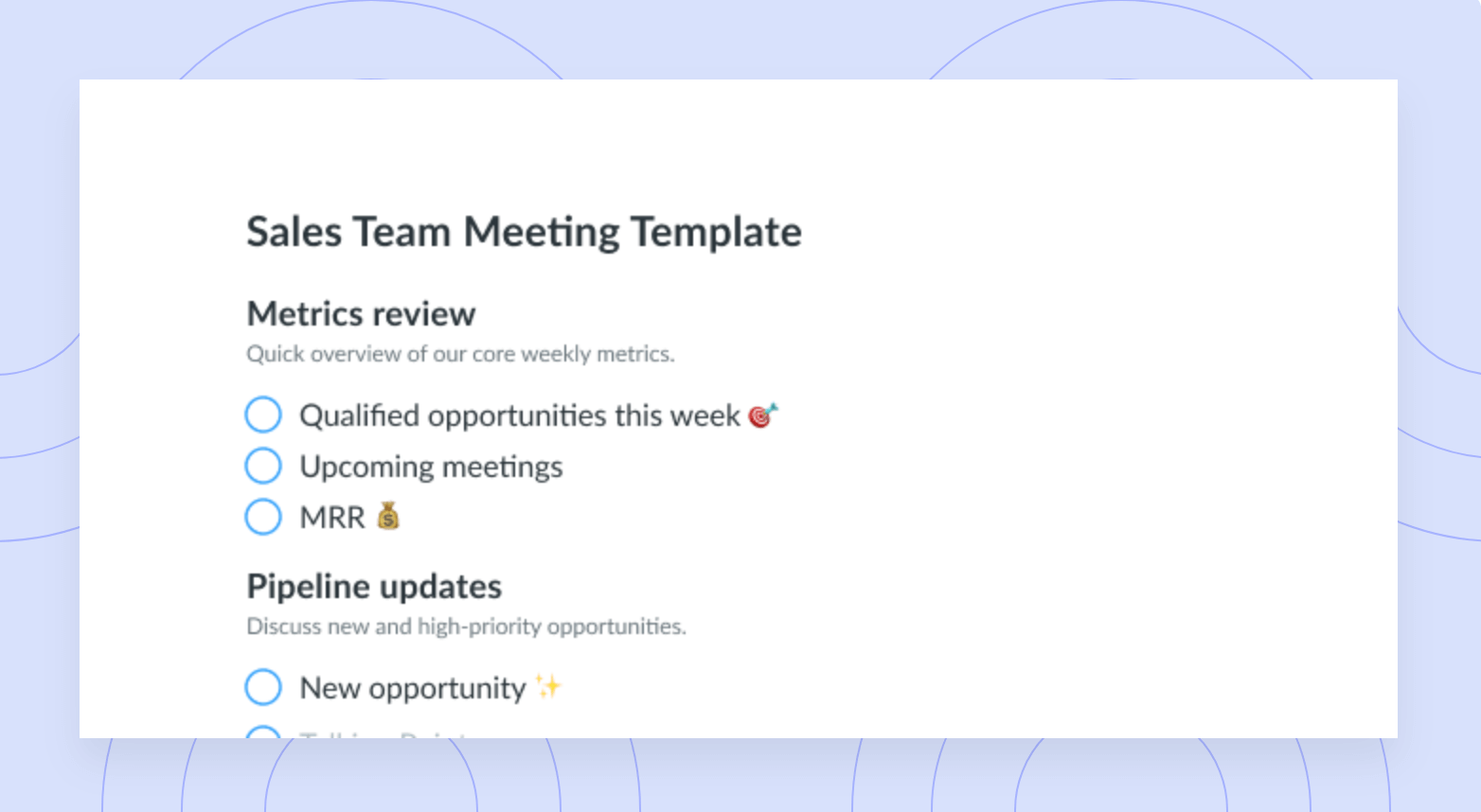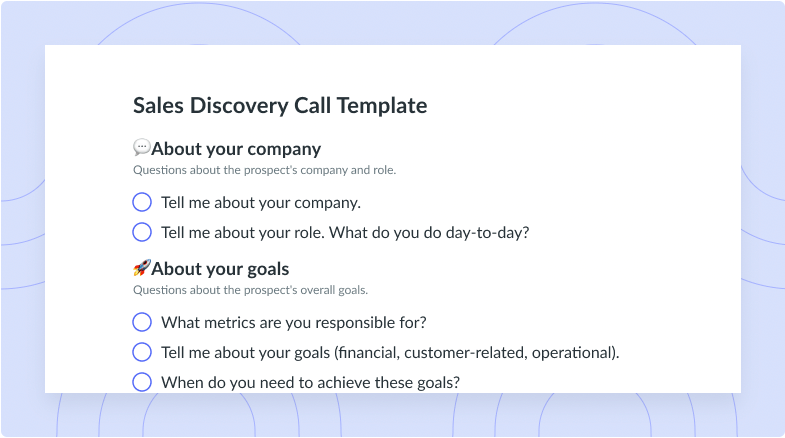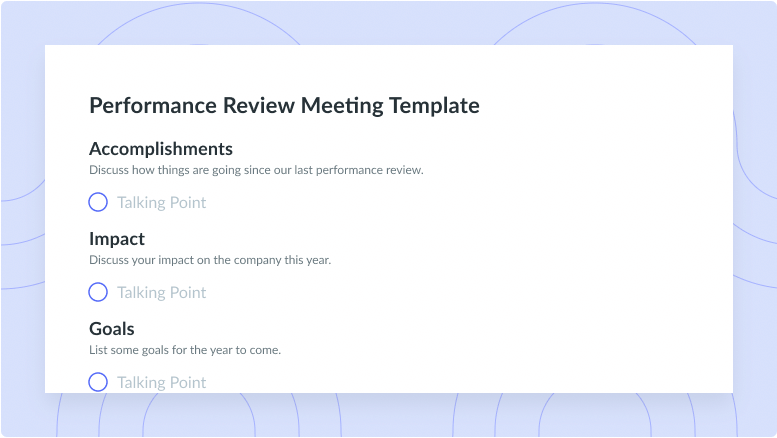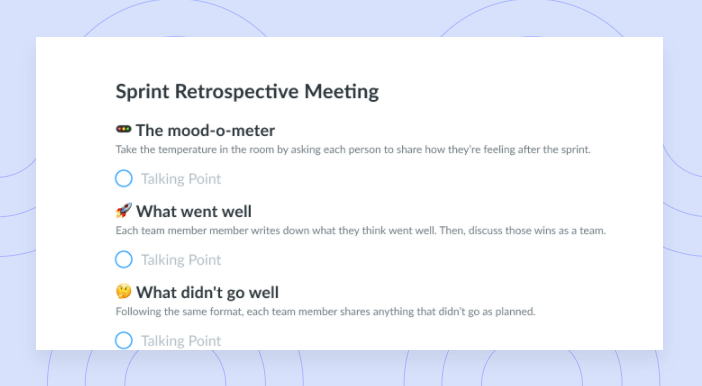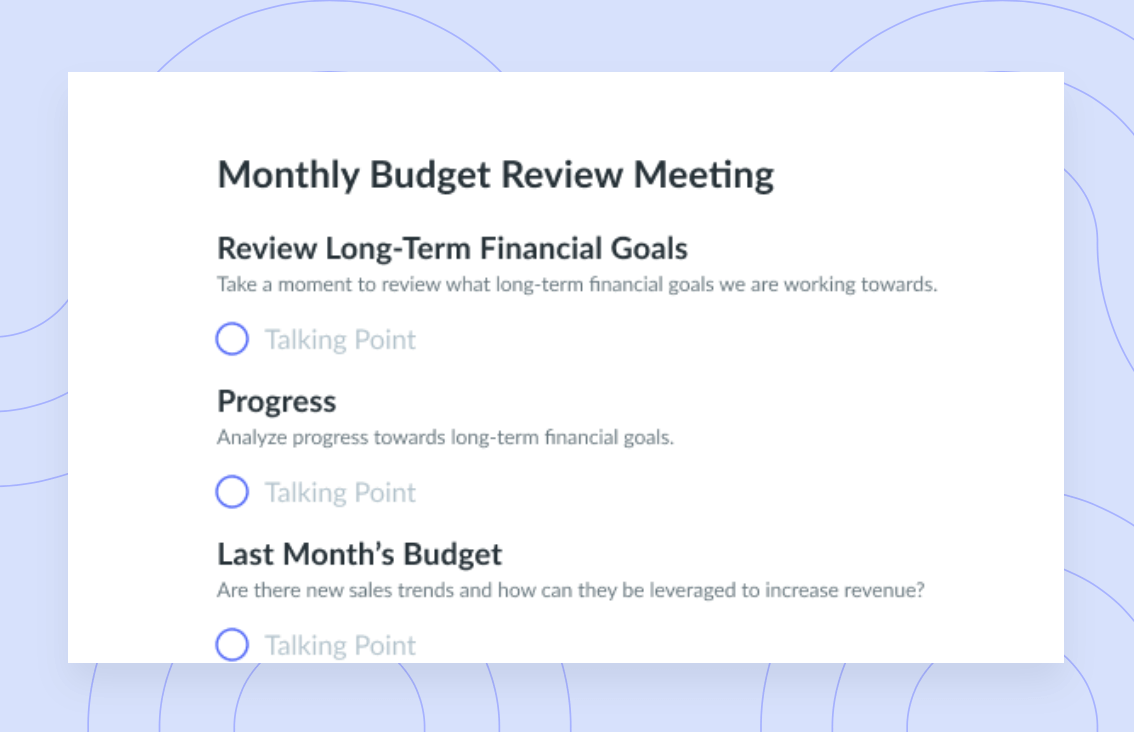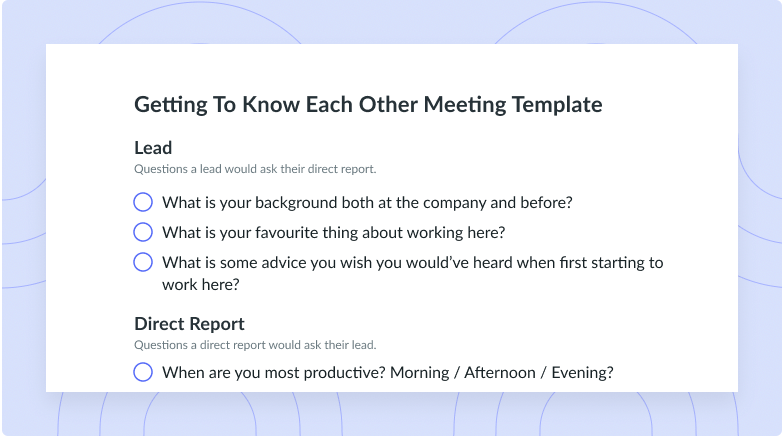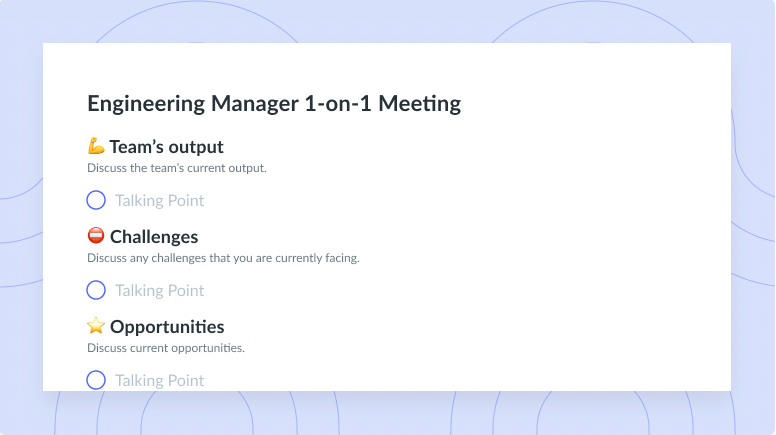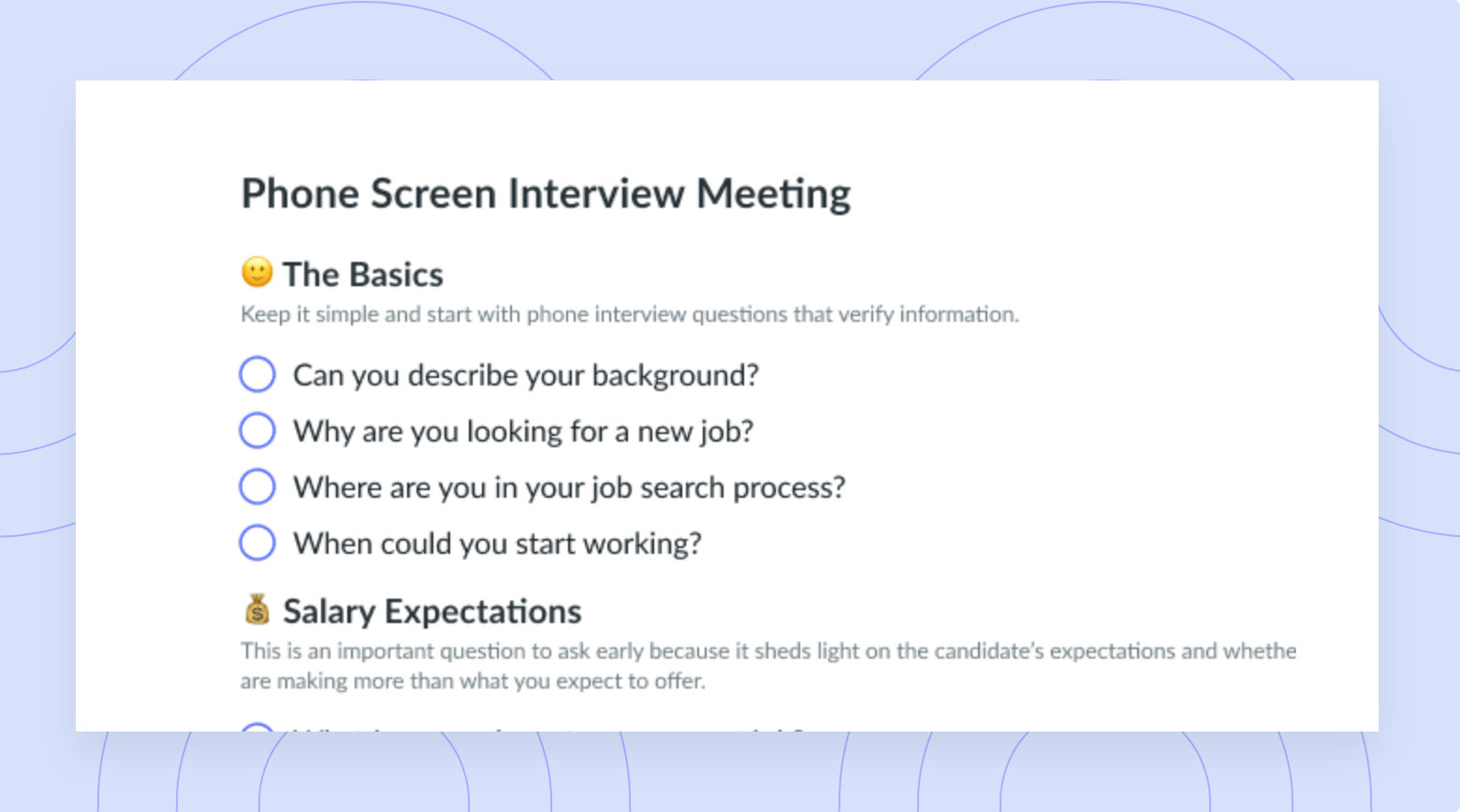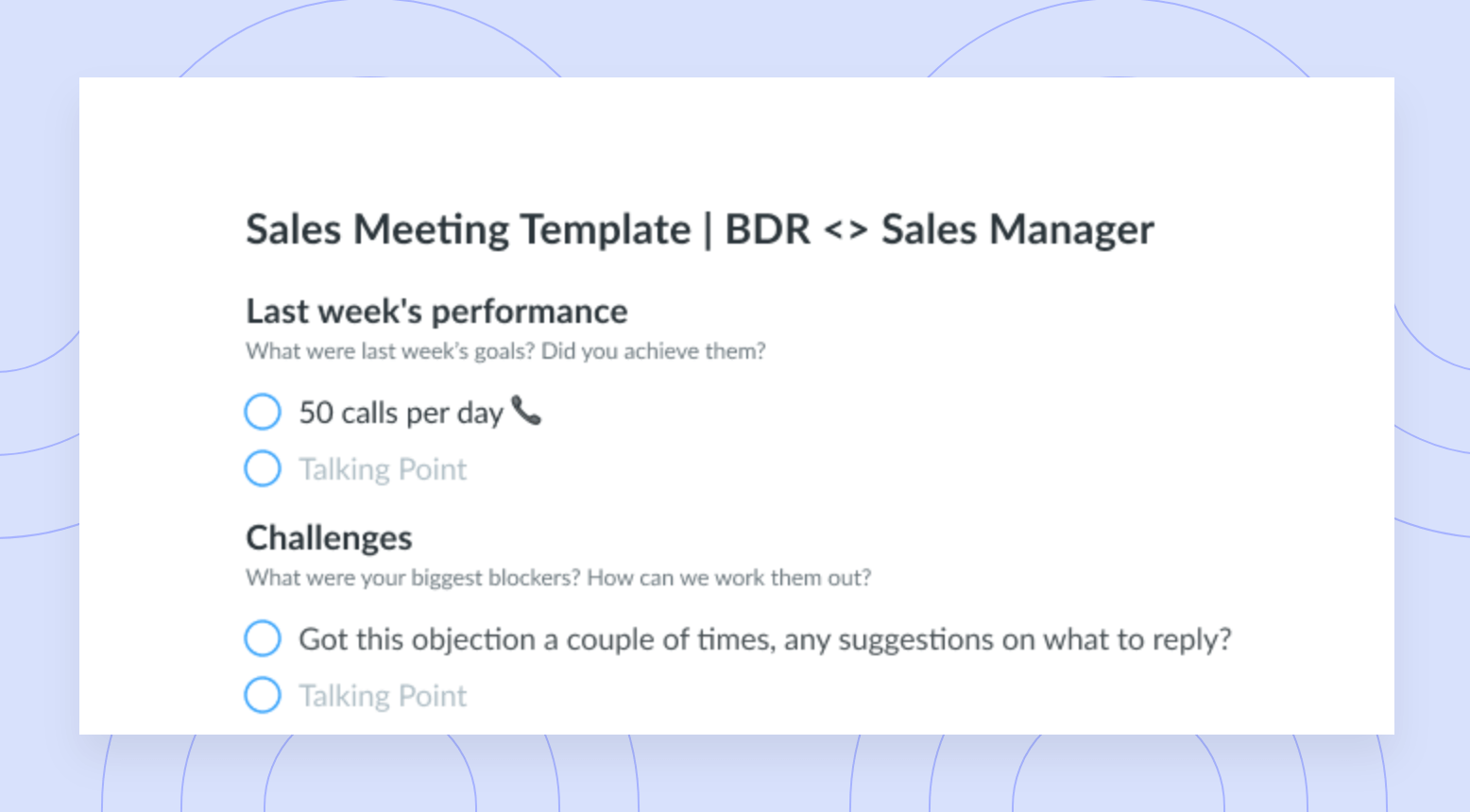
Deal Review Meeting Template
Get this templateSales reps can leverage this template to outline specific details about each opportunity they are exploring. Curate a one-of-a-kind strategy for every deal.


Deal Review Meeting Template Overview
If your company has a dynamic sales team or a sales team in general, you likely know the importance of a deal review meeting. Deal review meetings typically review specific accounts to determine the likelihood of a sale and any possible strategies for propelling that sale over the finish line.
Deal review meetings must take place between sales leadership and sales representatives. A deal review template is essential for organizing sales data and the questions you’d like to ask as the person in charge of how the meeting unfolds. These types of conferences tend to be incredibly specific. The purpose is to review individual accounts to determine the odds of closing specific deals and which strategies your sales representatives can employ to encourage the deals to close.
Every deal review meeting will be different as the content depends on the skills and capacity of your sales team, as well as the ability of the team leaders to help them navigate between meetings.
Many employers choose to schedule a deal review meeting at least once per month, but you can conduct them as often as you feel necessary. Before you get started, you’ll have to ensure that you have access to all the information you need, so pull whatever sales reports will enhance the meeting range.
Also, you can hold deal review meetings one-on-one if you have the time.
How to Run an Effective Deal Review Meeting
“You must expect great things of yourself before you can do them.” – Michael Jordan
The best practices for conducting a deal review meeting are organization, preparation, and knowing the best conditions in which your team receives information. If your sales reps prefer to go over deals individually, you’ll have to plan accordingly.
On the other hand, many sales teams don’t mind going over sales information in a group setting, as they tend to discuss their sales anyhow. Let them know if they would prefer a one-on-one; that option is available to them, as they shouldn’t have to discuss what is technically their performance in front of everyone.
Before representatives come into the meeting, you’ll want them to pull their reports and the deals they’re working on that still haven’t closed. They’ll have to prepare to bring you up to speed with a summary of the deals they need help with, and you can then identify the obstacles and create solutions together.
Remember, a deal review isn’t a performance review, and you aren’t here to tell your reps what they’re doing wrong. Instead, you’re coming together to look at the situation differently.
What’s inside this Deal Review Meeting Template:
“Great salespeople are relationship builders who provide value and help their customers win.” – Jeffrey Gitomer
Every one of these template sections is crucial to ensure the success of your deal review meeting. The time you’ll leave for the section depends on if you’re conducting meetings one at a time or as a group.
1 Opportunity summary
In the opportunity summary phase of the meeting, you’ll discuss which opportunities are currently open to the sales rep, and they’ll bring you up to date on how the sale has progressed thus far. This section is where you’ll gain all the information you need regarding the sale, so take notes and leave time for them to explain the situation thoroughly.
General overview of the opportunity.
- Amount to close: (booking) (Licence/SaaS)
- Contract duration:
- Total contract value:
2 Company overview
Even though you’re likely in leadership, you might not have a complete overview of the company in which your sales rep is trying to close. If your representatives send you their information beforehand, do some research before going into the meeting, take some notes, and prepare yourself to ask relevant questions about the company. The more you know, the easier time you’ll have figuring out how to make the sale.
General overview of the company (activity, size, revenue, location).
3Opportunity overview
If there was ever a time to utilize a sales deal review template fully, it’s now. The opportunity overview section gives your representatives the time to detail their current opportunities and what’s holding them back from closing. They can open up to you and highlight what they’ve tried, and you can perhaps give some insight into why the tactics haven’t worked.
Outline the specific details about the opportunity as it directly relates to the lead.
- What is our temporary technical advantage feature that is making the difference?
- What key actions can we do to maintain/develop our advantage?
- What issues are they facing? What key actions can we do to answer this?
- What are the measured results of the project?
- What are the customer goals and objectives?
- What are the expected benefits?
- What is the personal outcome that the customer as an individual will gain by succeeding with this project?
4Target acquisition
While the term “target acquisition” can mean a few different things, in sales, it means the customers in your target demographic that you’d like to acquire, and this pertains to both B2B and B2C sales. Discussing the target acquisition means ensuring that your sales team sets their sights on deals that are likely to close based on consumer profiles. It’s always good to highlight your original intended customer base and take notice if your sales reps have uncovered another one.
Outline the scope of this opportunity.
- Why will this decision be made?
- How will this decision be made?
- Who will drive the decision?
5Decision process
Leave plenty of time to talk about the decision process and the plan moving forward. Discuss which moves are the best if you’ve landed on different approaches to handle the current sales pipeline. Now is the time to decide if you’ll continue to pursue certain sales or leave them behind. You don’t want your sales reps to waste time on deals that aren’t lucrative, as it affects them as much as it affects the company.
Timeline of steps that we will complete in order to close the business.











